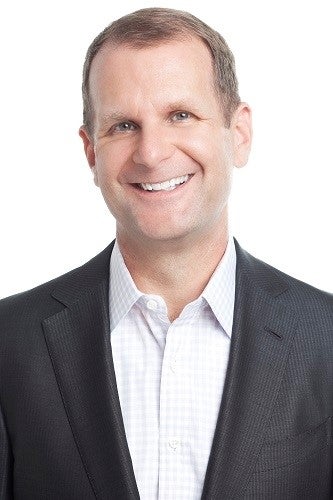In October 2020, I interviewed Kevin Rampe regarding Chubb NA OGC’s response to the COVID-19 pandemic work from home orders. At the time, Kevin’s title was general counsel of North America and director of global legal operations. However, since that interview, he has been promoted to global deputy counsel.
By way of background, I had the privilege of working with Kevin for more than 15 years, and was a keen observer and architect in his transformation of the OGC from a traditional legal department full of very good people who worked independently and in silos into an organization full of very good people who also embraced cultural change and teamwork. This team also leveraged technology, knowledge management, and process improvements to increase organizational excellence, to the extent that we were honored by being made ACC Value Champions in 2014. Since then, and following the acquisition of Chubb by the ACE Group (and rebranding the entire company to Chubb), the department has become even more progressive and invaluable to the company.
One of my last projects with the company was working with a talented team on the design and implementation of an online policy drafting request portal built on the Onit platform. This was so successful that it became the basis of LASER, the OGC’s legal services request portal. All legal services requests in North America are submitted and processed through LASER. Kevin was kind enough to walk me through the most recent iteration of LASER — and it is pretty fantastic. Among other things, it does a great job of establishing the correct workflows and processes, collecting metrics, and improving communication. This is important background to understand Kevin’s remarks below.
The interview transcript has been only very lightly edited because it provides color into how Kevin and the OGC responded to the work-from-home orders, and the lasting impact they likely will have even after the pandemic is over. Except as noted in bold when I spoke, all the transcription is of Kevin speaking. I think you will enjoy it.
Kevin: I’ll tell you the story. So, I actually had gone on spring break with my two oldest sons to Disney World and I came back on a weekend and saw the first order had come out from Pennsylvania on Friday requiring that all nonessential business offices needed to be closed. I think it was March 6, and it came out literally after the close of business at five or six at night. At first, we didn’t have an understanding of whether insurance was considered an essential business under the Department of Homeland Security guidance. It turned out that we could have remained open, but we chose at that point as a company to close the offices and everyone was directed to work from home from all locations.

We had not anticipated that we would have to close before the order came out. In response to COVID, we reminded people to bring their laptops home.
We still had a number of issues to deal with. Our business continuity plans were premised on the idea that we would be closed for days or a week. The idea of doing it long-term for months presents a lot of different challenges like basic ergonomics, people being able to work off a larger screen so they don’t go blind, all those basic things that are lost when you are looking at typical business continuity plans designed for briefer events more like 9/11. That was obviously a big challenge.
The office closing announcement was sent out by Chubb in general, not anything specific for the legal department, so Monday morning we remotely convened the senior legal team to really cascade down through the legal organization what we were going to do from there.
For the most part, the focus in the first couple days was on communication, using the tools we had. Fortunately, we had LASER (Onit). And we were lucky that the Chubb network held up; that the increased usage continued to allow people to do their jobs even when they were sitting at home. There were a lot of WebEx meetings, a lot of conversations. I met with most of the groups of staff, with most of those conversations focused on making sure people were all right and had the right tools — that if there were problems we were aware of them so that work wouldn’t get dropped.
We realized pretty early on that it wasn’t going to be just a few days, that it was going to be at least a couple of months. Conversations shifted to people needing multiple monitors to do their work, some people needing ergonomically correct chairs. We really were focusing on the basics of ensuring that people could do their work on a day-to-day basis. We had, as you can imagine, glitches. Some people had VPN or Wi-Fi issues, and those really overwhelmed us the first week, I’d say. As well as a lot of incoming directives coming in from regulators that legal had to interpret for the business regarding what we were supposed to do to protect our policyholders and our employees, and how we were supposed to operate.
Greg: You must have been barraged with these things just at a time when you were just trying to figure stuff out.
Right. So there was a lot of triaging. I mean, the good news was, early on we took the approach to go to the highest regulatory standard. It really made no sense to try to differentiate state by state by state, right? The plan was, in the initial stages, to look at what was the highest standard and go to that. Because it would just become overwhelming if we did otherwise. We made decisions like that so we wouldn’t get too close to what the requirements were so that we wouldn’t inadvertently cross the line. That was what we mainly focused on in the first few weeks: equipment challenges and not running afoul of these new regulatory requirements.
The good news was that we had an IT infrastructure that held up. People could get online and do their work; we had a WebEx system that people could actually use and not get kicked off. Some people needed help using the VPN, and even our managers had to become a little IT-savvy so they could help get their people on board.
At the end of the day, we had nobody who stayed on premise. There was nobody there. The biggest issue that lasted was mail. How to get the mail? It accumulated, and one person would scan it. But within a couple of months, we moved to where the mail center scanned all mail and just emailed it. And we encouraged people who got periodicals to change addresses so it would come to their homes.
There really weren’t other issues that required people to be on premise, and the regulatory and legal relief that permitted people to work from home came about relatively quickly.
So, that’s where that is.
For us, I’ll tell you it was a great opportunity. Because we had been working hard to move our businesses to an online platform, to LASER and Onit. And the pandemic accelerated this. I would say it moved us probably two years faster than I thought it would take. In fact, we had one business unit that was resistant to using LASER because they had their own underwriting system. But with this situation, they accelerated, they were forced to use LASER and the policy drafting portal. From a technology standpoint, it was a big win, because we’ve now cemented them into the company in a way that we would never have been able to have done in that timeframe. It would have taken a lot of conversation.
And I think it has fundamentally changed how we interact with them, because now they don’t even think of just going down the hall to have a conversation and hand off an assignment. They first go into the LASER portal. Just to give you sense, yesterday there were 95 requests in the LASER portal and that’s just within North America. And that’s not policy requests being drafted — there were hundreds of those — that’s just other legal service requests. That never, ever happened pre-COVID — maybe we would have had 40 LASER requests.
Through all this, I encouraged our people to have patience and to be flexible and forgiving, because people were now struggling to mix the personal and professional. And I think coming out of it, people now have a better understanding of all the stresses and strains, and what that means, in terms of working and picking up for their teams. And technology, very important, and processes, very important, but one of the most important things to get you through an event like this, and I think this is true in almost any context, is culture.
"And I think coming out of it, people now have a better understanding of all the stresses and strains, and what that means, in terms of working and picking up for their teams."
- Kevin Rampe
So, I spent a lot of time talking about our core values of team, value, and execution. This is what it means to be a team, picking up for your teammates when they can’t do things because they’ve got a kid at home who needs to be on a Zoom call. Or they’ve got a home repair they have to take care of, or someone they’ve got to go get groceries for. So, hopefully you have those cultural values and reinforcing those values helps you get through this, so that people feel they have some sort of connection.
That’s kind of the focus in the beginning. Communicating what’s going on, making sure people have the tools, and then reinforcing culturally what behaviors are expected. This is what we all prepared for; we’re going to work together, we’re going to focus on our jobs, we’re going to help each other. That’s really what you’re spending your time doing.
I think the other thing I’ll say is that as we moved forward, I began recording a weekly video on my iPhone that I do every week and gets distributed first thing Monday morning.
That is something I will continue and carry out of this — the use of video has been incredible in terms of keeping people connected as an organization. And what do I do on the video? It’s very straightforward. I go through the anniversaries people are having, I go through some of the major themes or any announcements or any events we’re doing to keep people connected and not alone. I give out the OGC Extra Mile Awards to highlight somebody’s work and use that as an opportunity to get out important messages.
I try to do the videos from different locations depending upon what messages I’m trying to send. Early on I was using it to talk a lot about work/life balance, maintaining their endurance, and being consistent in terms of what they’re capable of doing so they wouldn’t get burned out.
That became a big focus and something I will carry out of this, just so everyone starts out the week on a common theme. I wish I’d thought of doing this years ago, because you really have the ability to capture everyone and have them listen. They start out the week with the same objectives in mind. Like, “here’s what we’re doing this week, big picture.”
I don’t know that it would have been as successful prior to this. I’m surprised by this. Just to give you some idea, we regularly get around 208 views of the video, and there are only 228 people in the group, from Canada, Bermuda, and the United States. It’s impressive how many people actually view it. This is way more successful than the blogs I used to do. People love it.
This is just another way technology has been king throughout this entire process. LASER has been rolling out throughout Chubb. It is rolled out in Europe and Asia.
So, to me, the issue about back-to-work is culture. It’s an interesting time. A lot of people are making big decisions regarding their lives. With people being home, being with their families, people are reprioritizing, people have moved to different regions, and it hasn’t been disruptive because everybody’s been working from home. But now, as we move closer to a return-to- office environment, some of the life changes people have made they want to make permanent.
While we will never be a completely virtual OGC some of the questions we are asking are: Does it work for the business? Can we measure and monitor the performance to make sure that we can justify the arrangement if we’re asked?
We have a lot more work to do on this before we reach any conclusions. But I think it is fair to say that we have learned a lot over the last year about these arrangements.
Greg: I actually suggested this might be the case in a memo four years ago.
Right, you were ahead of your time. But we never had an opportunity for a proof of concept. This pandemic was a great opportunity because you had the proof of concept that it works and that forces everyone to accept it. What are the limits of that? I think that’s the great unknown, right? How does it work going forward? And we’re going to have to explore that. And what roles doesn’t it work for? I don’t know yet. But we’re going to explore it. We’ll find out.
I feel very good about it because we’ve gotten very comfortable from a cultural perspective, building a culture that endures remote working arrangements, because one of the biggest things you lose when everyone’s not in the office together is that kind of togetherness, people knowing each other. So, we do games, we do Town Halls every two months now, we do vlogs. It takes more effort, but if you put the effort in and keep people together in that way, virtually, which people again have become more comfortable with — even the ones who resisted it, because as a result of COVID, they’ve become more comfortable with it — as long as you keep that up, you can support that.
When you talk about what’s enduring out of this, I really do think that when you put the technology into changing the way people work, that’s going to be key to make that happen.
Greg: What lessons have you learned or advice do you have for other law departments?
Well, leveraging technology obviously, that has been key. But I keep coming back to it — culture first. Building a strong culture that can endure this kind of disruption, which really means people having a good understanding of their roles, how they fit into the organization, and feeling like they belong. And what that means. Those are going to be key.
Again, many thanks to Kevin and Chubb for allowing us to conduct this interview.




